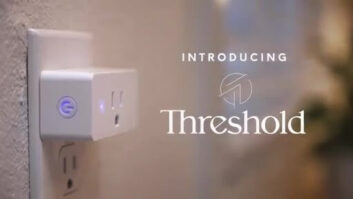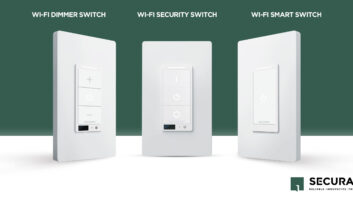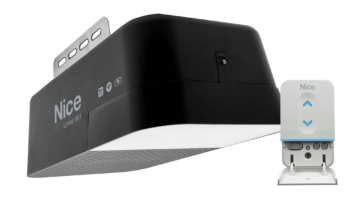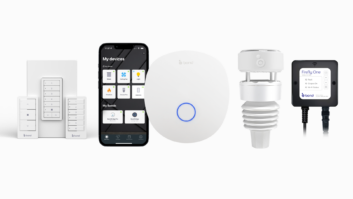There is a rising home networking trend that bodes a disturbing if not fearsome response from veteran residential system designers and installers alike. At first glance this trend bodes nothing but trouble for the CEDIA D/I, but upon further investigation, there is a promising new milestone in home networking technology that is poised to empower the next generation of new CE/IT convergent devices with plug-and-play ease of use with the promise of all but ubiquitous connectivity. This new force in home networking connectivity is none other than the WiFi standard based on IEEE’s 802.11b specification. Installation of WiFi networks in the SOHO/home segment reached a surprising 61 percent of market share in Q1 2003 up from 49 percent in Q1 2002, according to Synergy Research.1 This kind of growth is not hard to figure out, when considering the adoption of home broadband access-predicted to be in 22.1 million homes by the end of 2003-and noting that the majority of these broadband users want to share Internet access with more than one computer in the home, preferably connecting using “no new wires.” But what about that new technology hurdle and the specter of lost revenue?
First some basic definitions: Ethernet is the most pervasive, inexpensive high-speed networking topology (set of rules governing a network) available today. WiFi was created specifically for operating as a wireless Ethernet by creating connections between PCs and networks via a wireless access point (a kind of base station to transmit and receive data packets to and from mobile devices.) When we say “wireless, 802.11(x)” or “WiFi,” what we are really talking about is using a wireless transmitter and receiver to provide data connections between devices. Home ethernet networks use a twisted pair or 10/100BaseT cable to share a common communications line between devices-typically a desktop computer with broadband access to a second PC or laptop.
Wireless home networks do the same thing without using cables between devices. This works much like a cordless phone using radio signals instead of cables to connect the handset with the base station. A wireless network (WLAN) uses access points to connect devices back to the wired network, much like the cordless phone’s base station is plugged into you phone jack. This type of connectivity, using wireless access points, is typically referred to as “infrastructure mode” because devices are linked through the network infrastructure. Direct device linking is achieved through a connection called “ad hoc mode” and allows a WiFi connection “peer-to-peer” between two devices without going through a structured network. One example of an ad hoc connection would be setting up a direct link with a laptop and a data video projector like the recent HP/Margi wireless projector solution showed at InfoComm 2003.
There are several wireless standards being used or in development, but the most pervasive, by far, is WiFi, which is based on the IEEE 802.11b spec. WiFi is not really a spec but a certification standard. Equipment manufacturers who develop products to this standard can get a WiFi certification and be relatively sure that they will be interoperable with other WiFi-compliant devices and co-exist on the network. The “b” designator in the 802.11b specification is a code for the specific protocol elements used. The key elements to a wireless specification include frequency range (or the broadcast position on the electromagnetic spectrum), usually given in Gigahertz (1GHz = 1 billion cycles per second), data rate (how much data is being transmitted and received, usually given in a Mbps or megabits per second) and optimum range or distance that can be covered by the signal.
Figure 1 shows wireless standards with the key elements of frequency range, data rate and optimum range, plus certification status, security and regional availability. Simply put, the WiFi device is fast enough for pushing Internet packets around, but not fast enough for full-motion video content distribution, wirelessly. Two new developments, one available now and one on the 2004 horizon, will address this bandwidth issue. These solutions will provide increased bandwidth via .11a and .11g devices (both readily available) as well as a new compression standard that goes beyond MPEG4 called H.264 video compression (also known as AVC or advanced video coding). .
Already, .11a media devices are being used to deliver wireless data packets that can be translated into analog signals for the TV and stereo. AVC compression holds the promise of high bandwidth HDTV signals over broadband connections into the home and distributed wirelessly to points throughout the house. Together these two technologies will empower devices that will completely bridge between IT digital content from the PC and the CE analog devices found in the home entertainment systems and at HD resolutions.
WiFi home networks, however, are only part of the solution. Getting data from a PC source, like a downloaded music file in MPEG2 playing on your home A/V receiver still requires decoding into a format that CE devices can receive, not to mention the issues of storage and digital rights management. Digital Media adapters do just that by providing the bridge between the IT and CE world. They connect directly to the Internet or wireless receive data from an enabled PC and connect the final output using standard A/V cables to the TV, stereo or other CE device.
One attempt at bridging CE and IT came from the CE side as “home servers” and are meant to reside in the home entertainment center as yet another CE component. CES showcased devices of this type, including Pioneer’s Digital Media Library, Motorola’s SimpliFi, Integra’s Net Tune Server, Samsung’s Home Media Server and HP’s Digital Media Receiver. Most take advantage of an IT backbone and WiFi wireless interface but with a CE, consumer-friendly “face.” In other words, they require little or no PC knowledge, or even a PC in the home. This user friendliness does come at a cost, as most of these devices are selling for $1,000 and up. On the PC side of the house, CES also showcased several digital media clients that are a low-cost alternative to the home servers. These devices simply plug into existing PC networks, using existing ethernet protocol and WiFi standards for wireless transmission. They are relatively low cost because they leverage off the existing processing, storage and networking power of the stand-alone PC. Devices of this type were shown at CES by Sony (room link), Philips (wireless digital media receiver), Thomson (media server-prototype), Panasonic (AVC server system) PrismIQ (media player) and Toshiba (FACE transmitter). This represents a simple “client device” approach that according to the PC way of thinking, makes the most efficient use of equipment in the home office and home theater.
So what is the direction of home networks CE or IT based? To quote Forrest Gump: “I think it’s both;” that is to say, yes a new and exciting standard in home networking has emerged delivering on the promise of “no new wires,” ease of use and with the new home servers and media clients (almost) ubiquitous wireless connectivity is finally available. On the other hand, we are still faced with the idea of either paying a high price for specialized equipment that keeps the consumer at arms length from the PC (the home server approach) or dealing with that bothersome PC.
To the CEDIA D/I and VAR it all boils down to dollars for easier-to-install technology that insulates your high-end customers from the PC while expanding on the content source, availability and distribution as delivered by the promise of digital media. What should not be lost on the industry is the market potential for these kinds of devices. According to Parks Associates, 30 million devices will be connected in a CE to PC network by 2007 and you can bet your bottom dollar that while the lion’s share of the unit volume of these 30 million devices will not be from the CEDIA community, the lion’s share of the profits certainly may be.
Note: Parts of this article were based on information from The Wireless Residence: Expanding Developer Opportunities (published: May 2003) by ON World (www.onworld.com).
Steve Sechrist ([email protected]) is an A/V consultant and technical writer in Vancouver, WA.







